The Japandi style, a fusion of Japanese and Scandinavian design principles, has been gaining popularity due to its emphasis on simplicity, functionality, and connection to nature. Creating a Japandi style living room involves carefully selecting furniture pieces that embody these principles. Here are three essential furniture pieces that are key to achieving the perfect Japandi style living room.
Mnimalist Japandi Style Living Room Sofa

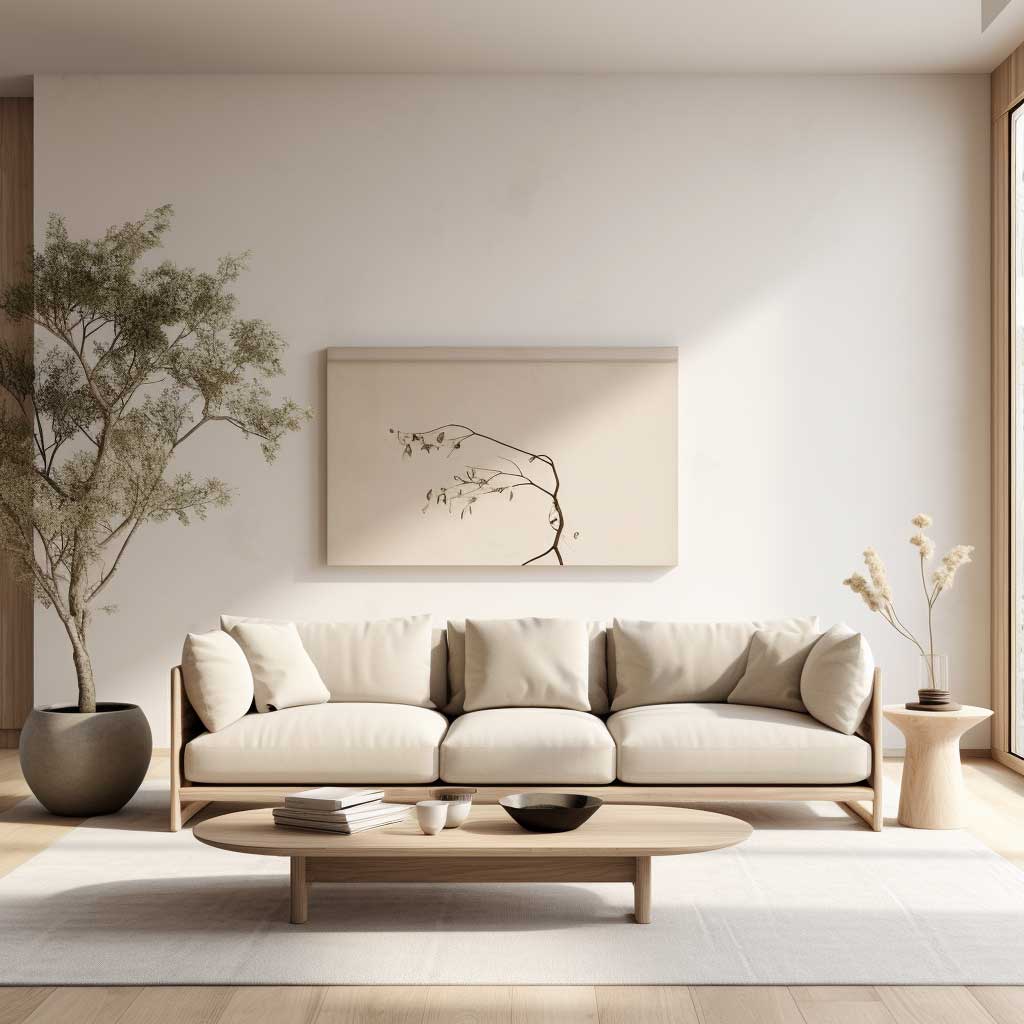
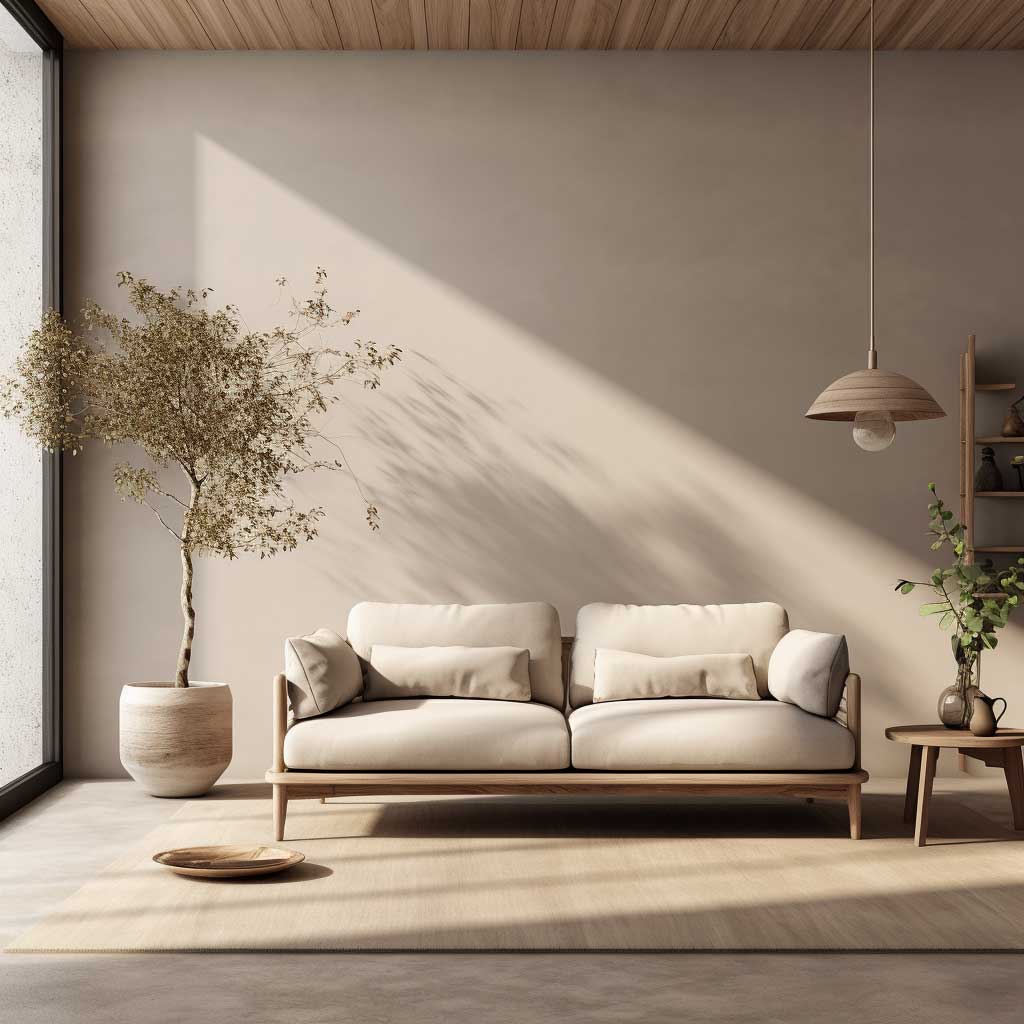

The Japandi style is a harmonious blend of Japanese and Scandinavian design principles, which focus on simplicity, functionality, and a connection to nature. One of the key elements of a Japandi style living room is the use of minimalist furniture with clean lines and simple forms. A minimalist sofa, with its neutral upholstery and simple design, is an essential piece of furniture that provides comfort and elegance to a Japandi style living room.
The sofa is often the largest piece of furniture in the living room and serves as a focal point in the space. In a Japandi style living room, the sofa is often upholstered in a neutral color, such as white, grey, or beige, which creates a calm and soothing atmosphere and complements the other furniture and accessories in the room. Additionally, the sofa often has a simple and minimalist design with clean lines and a low profile, which is characteristic of both Japanese and Scandinavian design.
The materials used in the sofa are also important in a Japandi style living room. Natural materials, such as cotton or linen, are often used for the upholstery, as they add texture and warmth to the space and create a connection to the natural world. Additionally, the frame of the sofa is often made of natural wood, such as oak or walnut, which adds warmth and texture to the space and complements the other furniture and accessories in the room.
The layout of the sofa in a Japandi style living room is also important. The sofa is often placed against a wall or in the center of the room, facing a focal point, such as a fireplace or a large window. This creates a sense of balance and harmony in the room and helps to define the seating area. Additionally, the sofa is often paired with other seating options, such as chairs or a bench, to create a cozy and inviting seating area.
The sofa in a Japandi style living room may also have some functional features, such as removable covers or modular design. Removable covers make it easy to clean and maintain the sofa, while a modular design allows for flexibility in the layout of the room. Additionally, the sofa may have a low back and wide arms, which creates a sense of openness and space in the room.
In summary, a minimalist sofa with neutral upholstery and simple design is an essential piece of furniture in a Japandi style living room. It provides comfort and elegance to the space and serves as a focal point in the room. The materials used in the sofa, such as natural cotton or linen for the upholstery and natural wood for the frame, add warmth and texture to the space and create a connection to the natural world. Additionally, the layout of the sofa in the room and its functional features, such as removable covers or modular design, add to the functionality and flexibility of the space.
Sleek Wooden Coffee Table in Japandi Style Living Room
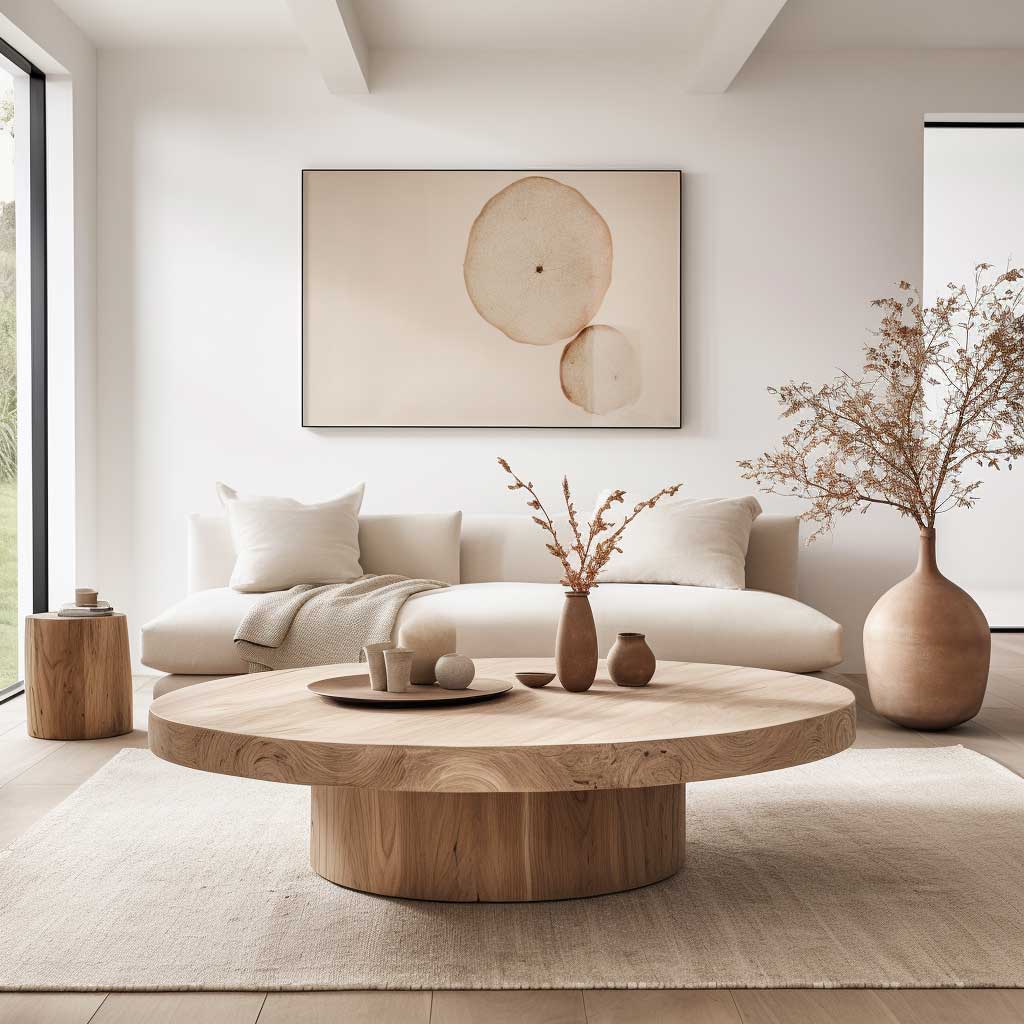



The Japandi style is a design trend that combines the minimalist and functional aspects of Scandinavian design with the elegance and sophistication of Japanese design. A key element of a Japandi style living room is the use of sleek wooden furniture with clean lines and a natural finish. One such essential piece of furniture is a sleek wooden coffee table, which serves as a functional and aesthetic centerpiece in a Japandi style living room.
A coffee table is an important piece of furniture in any living room as it serves as a functional surface for placing drinks, books, or decorative objects, and also as a focal point that helps to define the seating area. In a Japandi style living room, the coffee table is often made of natural wood, such as oak or walnut, and has a simple and minimalist design with clean lines and a natural finish. This creates a sense of warmth and texture in the room and complements the other furniture and accessories.
The design of the coffee table in a Japandi style living room is often inspired by traditional Japanese furniture design, which emphasizes simplicity, functionality, and a connection to nature. For example, the coffee table may have a low profile, which is characteristic of traditional Japanese furniture, and may have simple and clean lines, which is characteristic of both Japanese and Scandinavian design. Additionally, the coffee table may have a natural wood finish, which showcases the natural beauty of the wood and creates a connection to the natural world.
The size and shape of the coffee table in a Japandi style living room are also important considerations. The coffee table should be proportionate to the size of the room and the seating area, and should be large enough to be functional, but not so large that it overwhelms the space. Additionally, the shape of the coffee table should complement the other furniture in the room and should create a sense of balance and harmony. For example, a rectangular coffee table may work well in a rectangular room or with a rectangular sofa, while a round coffee table may work well in a square room or with a sectional sofa.
The coffee table in a Japandi style living room may also have some functional features, such as storage space or a lift-top design. This adds to the functionality of the coffee table and helps to maximize the use of space in the room. For example, a coffee table with drawers or shelves can provide storage space for books, magazines, or remote controls, while a lift-top coffee table can provide a surface for eating or working on a laptop.
In summary, a sleek wooden coffee table with clean lines and a natural finish is an essential piece of furniture in a Japandi style living room. It serves as a functional and aesthetic centerpiece in the room and helps to define the seating area. The design of the coffee table is often inspired by traditional Japanese furniture design and should complement the other furniture and accessories in the room. Additionally, the size and shape of the coffee table should be proportionate to the size of the room and the seating area, and the coffee table may have some functional features, such as storage space or a lift-top design.
Functional Storage Unit in Japandi Style Living Room
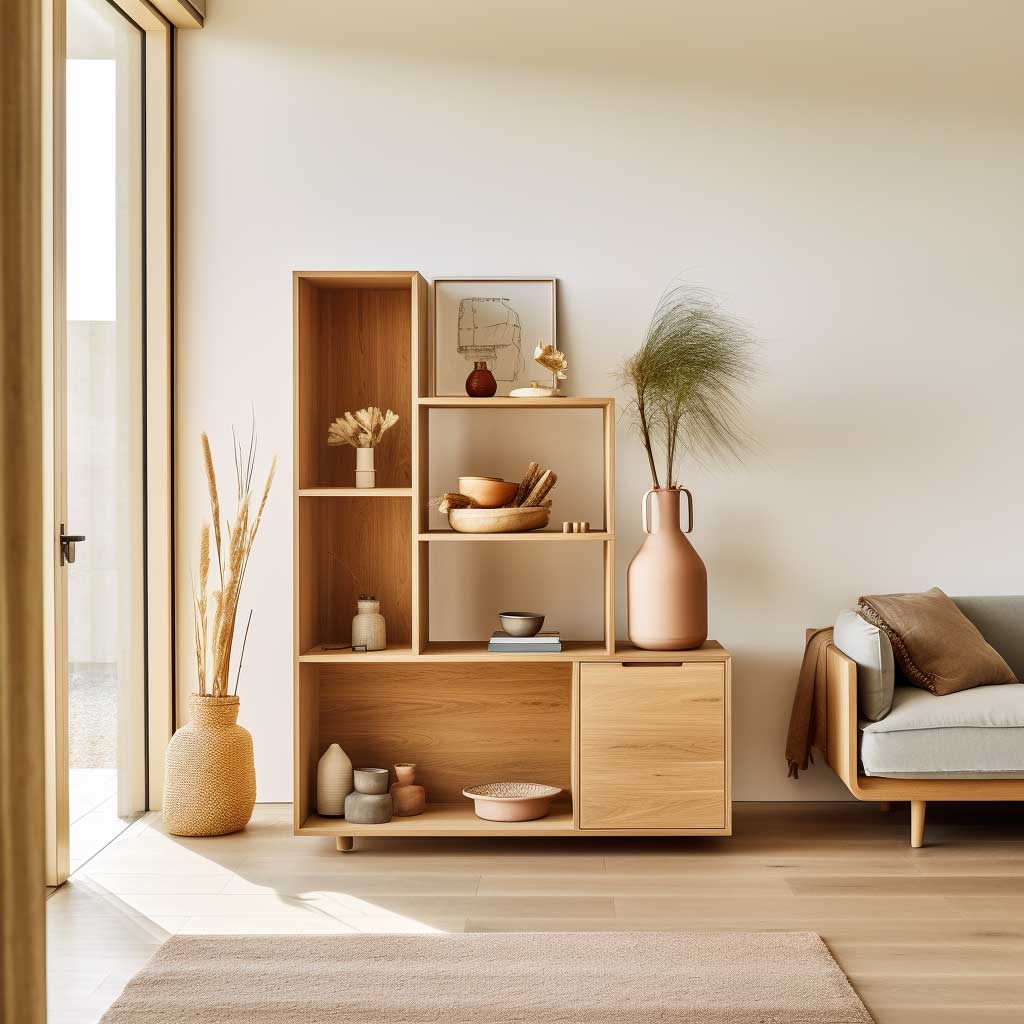
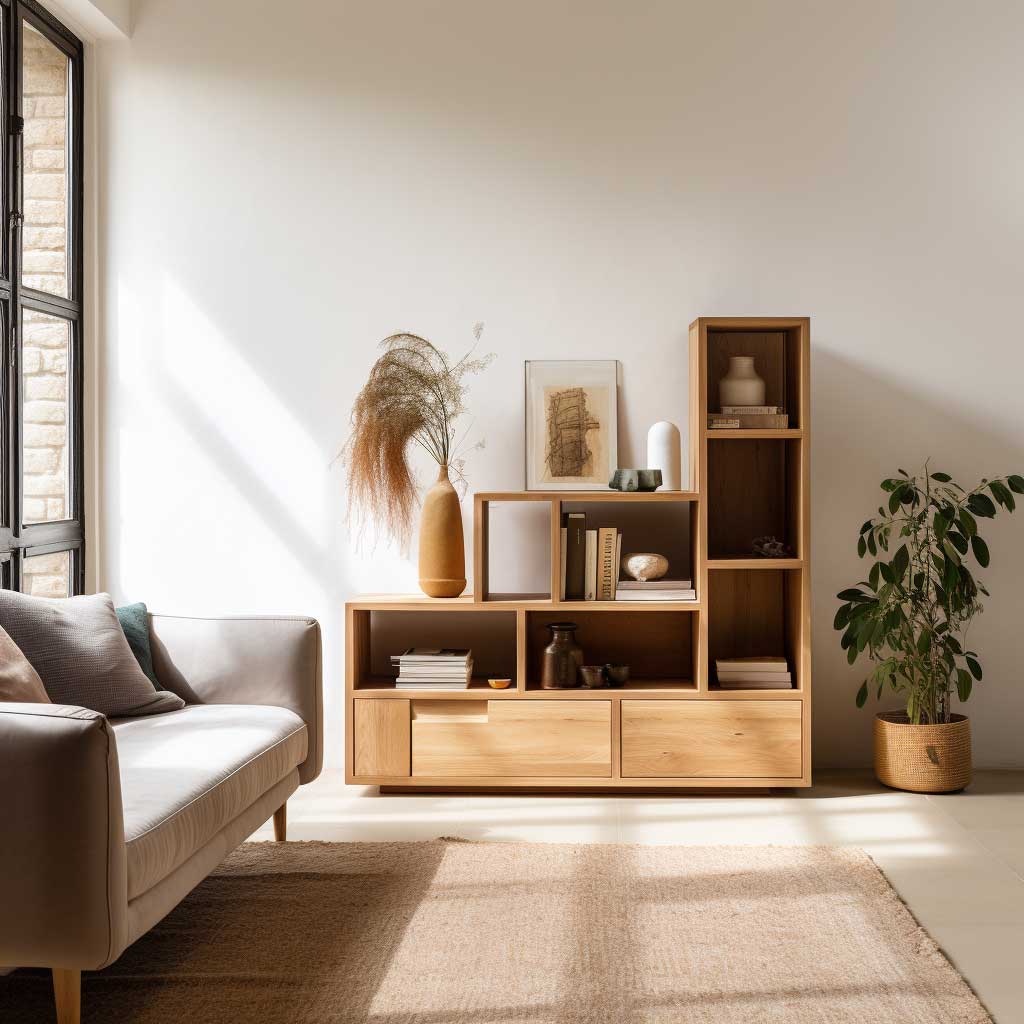
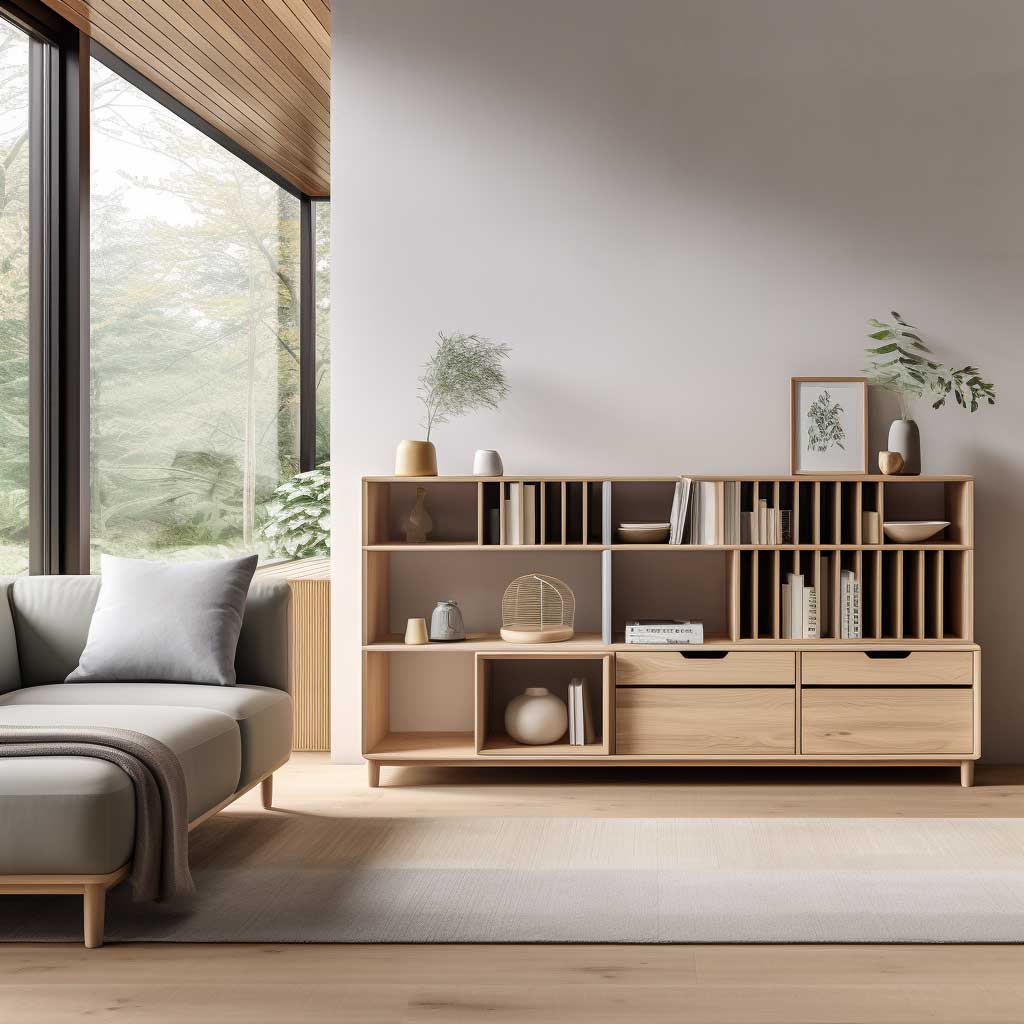

The Japandi style is a design trend that combines the minimalist and functional aspects of Scandinavian design with the elegance and sophistication of Japanese design. A key element of a Japandi style living room is the use of functional storage units with a minimalist design and natural wood finish. These storage units offer practical storage solutions while complementing the aesthetics of a Japandi style living room.
Storage is an important aspect of any living room, as it helps to keep the space organized and clutter-free. In a Japandi style living room, the storage units are often designed with clean lines and simple forms, which is characteristic of both Japanese and Scandinavian design. Additionally, the storage units are often made of natural wood, such as oak or walnut, which adds warmth and texture to the space and complements the other furniture and accessories in the room.
The storage units in a Japandi style living room may include a bookshelf, a sideboard, or a TV unit. A bookshelf with a minimalist design and natural wood finish can provide storage space for books, magazines, and decorative objects, while a sideboard with a minimalist design and natural wood finish can provide storage space for dishes, glassware, and other items. Additionally, a TV unit with a minimalist design and natural wood finish can provide storage space for electronic devices, such as a TV, a DVD player, or a gaming console, as well as for DVDs, CDs, and other media.
The layout of the storage units in a Japandi style living room is also important. The storage units should be placed in a way that maximizes the use of space in the room and creates a sense of balance and harmony. For example, a bookshelf may be placed against a wall, while a sideboard may be placed against another wall or in the center of the room. Additionally, the storage units should be placed at a height that is convenient for use and does not overwhelm the space.
The storage units in a Japandi style living room may also have some functional features, such as adjustable shelves or drawers. Adjustable shelves allow for flexibility in the storage of items of different sizes, while drawers provide additional storage space for smaller items. Additionally, the storage units may have doors or sliding panels, which help to keep the contents organized and dust-free.
In summary, functional storage units with a minimalist design and natural wood finish are an essential element of a Japandi style living room. They provide practical storage solutions while complementing the aesthetics of the space. The design of the storage units should be inspired by both Japanese and Scandinavian design principles, and the layout of the storage units in the room should create a sense of balance and harmony. Additionally, the storage units may have some functional features, such as adjustable shelves or drawers, which add to the functionality and flexibility of the space.
Conclusion
The Japandi style living room is a perfect blend of the minimalist and functional aspects of Scandinavian design with the elegance and sophistication of Japanese design. It emphasizes the use of neutral tones, natural elements, minimalist furniture, and functional design to create a space that is calm, harmonious, and connected to the natural world. By carefully selecting furniture and accessories that serve a specific purpose, arranging the furniture in a way that promotes openness and flow, and incorporating natural elements such as wood, stone, and plants, you can create a Japandi style living room that is both beautiful and functional.












